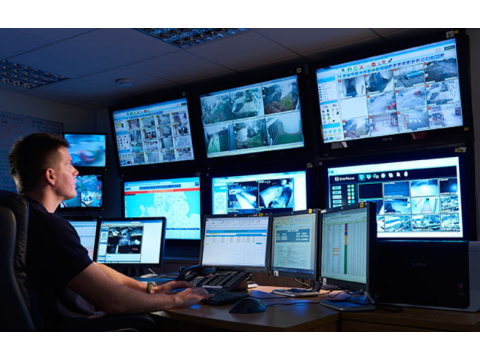What Is Centralized Security Monitoring?
Centralized security monitoring, or "Pultovaya Signalizatsiya," involves advanced systems and personnel designed to ensure the protection of residential, commercial, and industrial properties. This form of security utilizes sophisticated technology and response teams to monitor and react to alarms triggered by various systems installed at the client’s premises.
Understanding PCO and PCN
Two key components of centralized security monitoring are:
- PCN (Pult Centralizovannogo Nablyudeniya): The Centralized Monitoring Station responsible for tracking signals from client-installed alarm systems.
- PCO (Pult Centralizovannoy Okhrany): The Centralized Security Control, which includes both monitoring and response capabilities.
The structure of a PCO typically includes:
- PCN Operators: Monitor and manage alarm signals.
- Response Teams: Mobilize to investigate and address alarm triggers.
- Technical Specialists: Maintain and troubleshoot the alarm systems.
Types of Alarm Systems Connected to PCO
A variety of alarm systems can be integrated into centralized monitoring, such as:
- Intrusion Alarms: Detect unauthorized access.
- Fire Alarms: Identify smoke or fire hazards.
- Panic Alarms: Triggered manually in emergencies.
The integrated monitoring system ensures quick identification of issues and immediate response, minimizing risks to property and occupants.
Transmission Methods in Centralized Monitoring
To relay information to the PCO, several transmission methods are employed:
- Wired Communication: Utilizes dedicated lines for high reliability but is less common due to installation complexity and costs.
- Radio Frequency (RF): Requires licensed frequencies, providing medium-range coverage (up to 5-10 km), but susceptible to interference.
- GSM Communication: Leveraging mobile networks for data transfer, GSM systems are now the preferred choice due to their reliability and widespread coverage.
GSM-Based Alarm Systems
Modern PCO systems rely heavily on GSM technology, particularly using GPRS for efficient data transmission. Key benefits of GSM include:
- Wide network coverage.
- Packet-based communication for rapid and reliable data exchange.
- Enhanced monitoring capabilities with options for signal strength amplification in low-coverage areas.
Essential Equipment for Pultovaya Signalizatsiya
Centralized security monitoring systems require specific equipment to function effectively:
- Control Panels: Serve as the system's command center, processing data from sensors and sending alerts.
- Sensors and Detectors: Include motion, glass break, and door/window sensors tailored to the property’s needs.
- Transmission Modules: Facilitate communication between the property and the PCO (e.g., GSM or RF modules).
- Reinforcement Features: Address potential vulnerabilities, such as installing window grilles to delay unauthorized entry.
Advanced systems, such as the Orion Integrated Security System by Bolide, allow for precise zone monitoring and seamless communication with the PCO.
Advantages of Centralized Security Monitoring
- Early Detection: Identifies security breaches at the earliest stage, ensuring swift response.
- Precise Localization: Pinpoints the exact zone of intrusion, streamlining response efforts.
- Enhanced Reliability: Utilizes advanced technologies to minimize false alarms and maximize efficiency.
- Scalability: Adaptable to small properties or large commercial complexes.
Conclusion
Centralized security monitoring (Pultovaya Signalizatsiya) combines cutting-edge technology with professional oversight to deliver unmatched protection for homes and businesses. By integrating early detection systems and robust communication channels, these systems ensure rapid and effective responses to potential threats.
To explore advanced centralized monitoring solutions for your property, visit safsale.com today!

